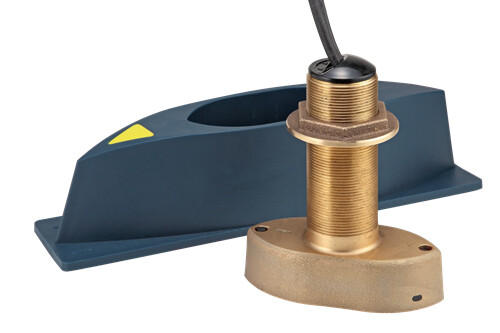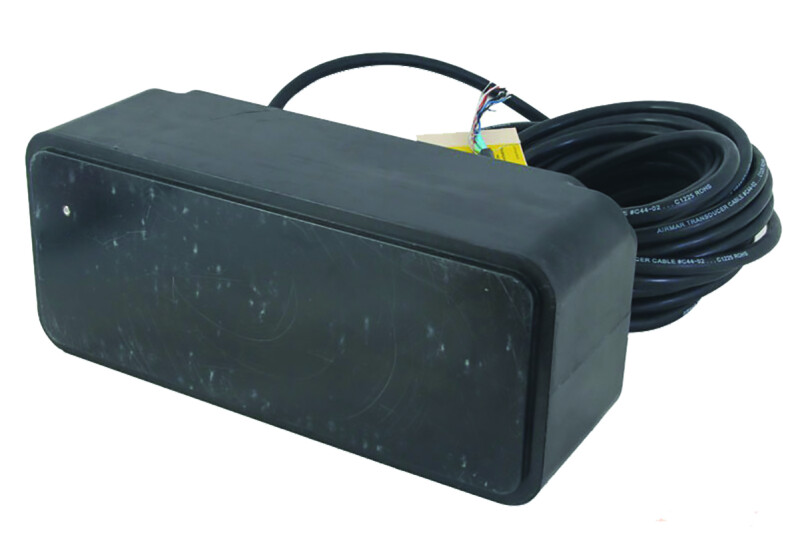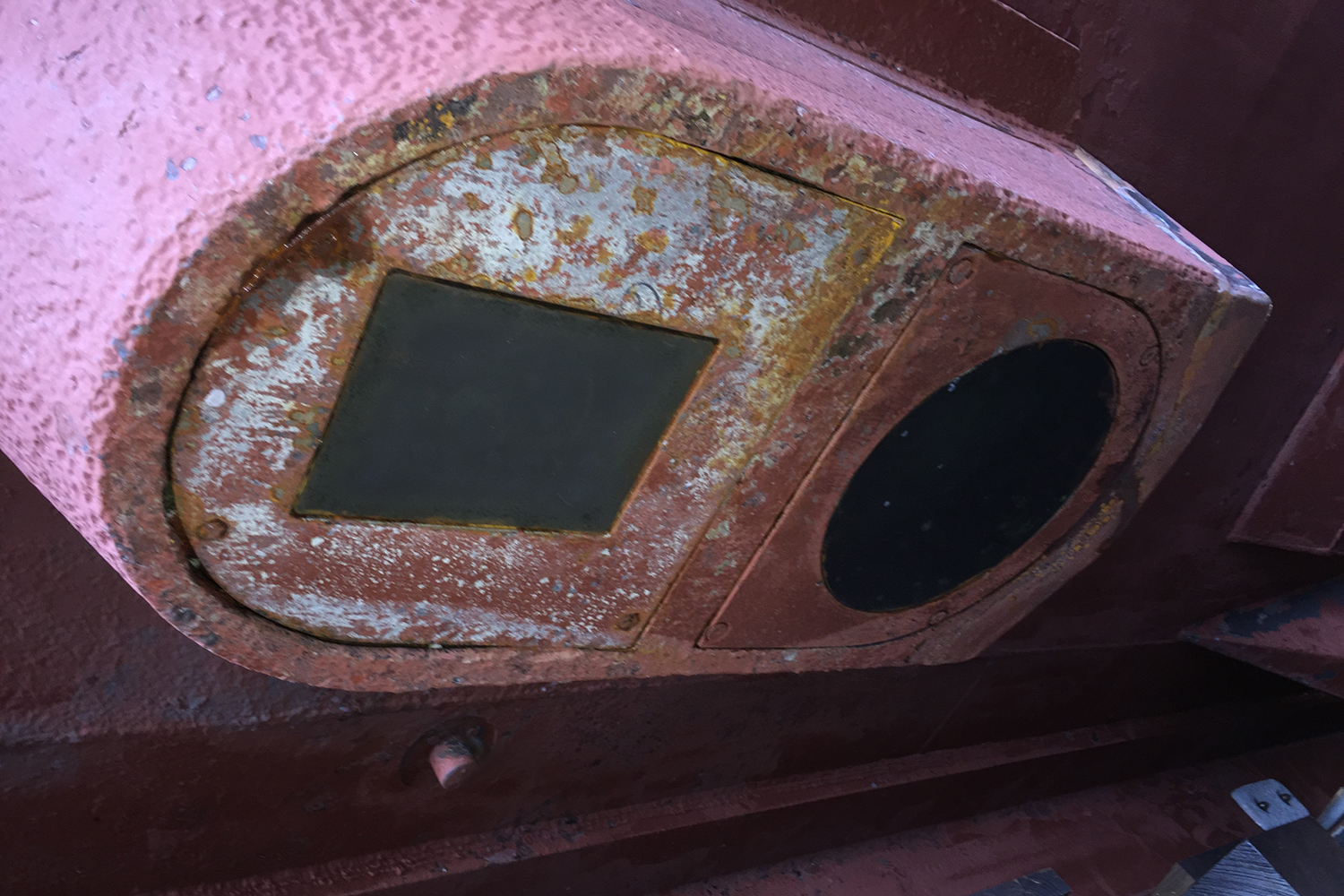Electronics suppliers and installers are ready for service, following a year of restricted global supply chains
Regardless of where one stands on the mask mandate for commercial fishermen, it’s safe to say coronavirus has affected almost every aspect of fisheries. The marine electronics market is working a double-edged sword.
“Demand is through the roof,” says Furuno’s Matt Wood. “And we have products back ordered.”
Furuno is not alone. More than 18 months of restrictions aimed at combating the pandemic resulted in a significant slowdown of imports from Asia, including marine electronics products. But as fishermen gear up for a return to something more like normal, suppliers and installers of the latest fishfinders and transducers have their hands full.
Among the rising stars in the Furuno line is the DFF3D echosounder, introduced three years ago. Fishermen are using the split-beam sounder with different transducers in a variety of applications.
“These have really caught fire,” says Wood. “And we’ve just scratched the surface of what they can do. In the East they are using them with Time Zero for bottom building, in Southeast Alaska, too.”
Some salmon trollers have reported good results with the DFF3D. “They can use it to steer side to side,” says Wood. “Salmon are hard to see on any sounder, but if you look at it long enough, you can see them.”

The DFF3D is also selling well in the Caribbean. “We have a guy down there in Venezuela putting them on refurbished boats that were damaged in Katrina,” Wood says. Snapper and grouper jig boats, he notes, can use the DFF3D with a low-frequency transducer down to almost 200 fathoms.
According to Wood, pelagic longliners are using a combination of a traditional 50/200 downsounder, along with a CI68 broadband sounder. “That’s really important, because it can give you five slices of the water column.”
But having the right equipment isn’t everything, proper installation can make all the difference. Most marine electronics installers base their recommendations for transducer placement on experience. Tony Vieira of T&K Electronics in New Bedford, Mass., often travels to the boatyards of the Gulf Coast to install electronics.
“I usually just go down and put an X on the hull, and that’s where they put the tube for the transducer,” he says. “You place the transducer where there’s less bubbles. The best placement is about three-quarters of the way forward from the stern, a quarter way back from the bow. Sometimes there’s one on each side, for backup.”
Vieira started working on marine electronics before he could drive. His shop in New Bedford occupies the building that once housed Tomtronics, the shop where he got his first job. Technological advances keep him honing his skills.
“I take online seminars,” he says, noting that manufacturers encourage technicians to attend. “I did one with Simrad on the new version of their MFDs [multi-function displays], and another with Furuno on the new TZ touch. But today I’m working on a 1987 Koden sounder. I worked on this same one 15 years ago. Their stuff keeps ticking.”

Chuck Finch, service manager at Si-Tex Koden, is all about the technology. “What commercial boats are using is our Koden FX series,” he says. “Like the Koden CVS FX2BB or the Koden CVS-FX1. These are broadband echosounders that can be tuned in 0.10 kilohertz steps. Different species of fish have different size air bladders, or in some cases no air bladders. By changing the frequency and seeing how the fish echo improves or degrades, a fisherman can zero in on the exact frequency that shows the target species best. Once you determine which frequency works best for the target species, you don’t need to see the other clutter that you get from a CHIRP-type sounder, which sweeps through a range of frequencies.”
Finch points out that the broadband machines can also enable users to get the most out of their transducers by allowing a fisherman to install a new unit on a traditional dual-frequency transducer that may already be installed on the boat. All that is needed is to dial in the correct frequencies for the existing transducer and lock the Koden CVS-FX unit in on those frequencies. The boat can then go fishing and wait until the next haulout to change over to a broadband transducer. But again, the correct transducer placement is vital.
“The key element is to have a clean, undisturbed water flow over the face of the transducer,” says Finch. “If the transducer is mounted too close to the prop shafts or water intakes, the turbulence coming off them can seriously degrade the performance of any echo sounder.”
Finch does not handle the marketing of Koden and SiTex products, but he notes that sales are strong in eastern Canada.
“We’re also making headway on the West Coast. We know of one well-known salmon troller in California using our Koden CVS-FX1. He has zeroed in on the perfect frequency for catching steelhead salmon, and can find them when no one else can.”
Further north in Seattle, companies like Lunde Marine are equipping crab boats and longliners for the Bering Sea.
“We sell a lot of the Furuno FCD1900,” says Lunde’s Steve Wallace. “Along with the 588 and the 292. These are black box machines that have an MFD or LCD monitor and keyboard. A lot of boats use the Simrad split beam. We have not seen anyone using the DFF3D. We’d like to, we’d like to see how well it works. The problem is it ties into Navnet. If they had a black box, it could interface with other programs.”
As far as Wallace knows, it’s not common to consult with naval architects regarding the placement of transducer tubes. “We put our thumb up in the air and say: There. We usually have a good idea. Vulnerability of the tube is a concern, but not really a problem, we’ve lost a couple, usually on rocks, but as long as you keep off the beach.” According to Wallace, some boats will have a guard in front to the tube.
In Alaska, as Wallace notes, the big names are Furuno and Simrad.
“The Simrad ES80 offers many frequencies,” says Mike Hillers of Simrad. “From 18 kHz, through 38, 50, 70, 120, 200 and 333 kHz. With the ES80 Wide Band Transceiver, Simrad can cover any frequency from 34 to 400 kHz.”
According to Hillers, deepwater longlining or deep pot/trap fisheries need low frequency and narrow beams. Low frequency gets deep, and narrow beam gives better bottom contours and bottom type than wide beams.
“For pelagic or surface fisheries like trolling for albacore or salmon, a wide beam is important,” says Hillers. “It can display more of the water column activity and biomass. The ability to see the same water column with multiple frequencies gives the fisherman the ability to analyze species and make decisions.”
Arlington, Wash.-based Wesmar has been making sonars and transducers since 1965.
“We make two types of sonars,” says Roger Fellows. “One is mounted in a sea chest and is a searchlight sonar for fishfinding. The other is our trawl sonar, on the headrope of the trawl. That shows the net spread and where the fish are in relation to the net.”
According to Fellows, the transducer for the Wesmar HD860, the searchlight sonar, is installed inside a sea chest equipped with a hoist that can draw it back into the hull when not in use.
“That protects it and reduces drag on the hull. The competition makes very good transducers for lots of different applications,” says Fellows. “We make 6-inch, 8-inch, and 10-inch-diameter transducers specifically for our sonars.”
J.D. Wilkinson, VP of operations and engineering, notes the advantage of that specificity.
“The more generic you make a transducer, the more average the performance,” he says. “With ours you can tune it to give you the best possible picture. Also, worth mentioning is that ours are stabilized. The transducer is connected to a three-dimensional gyro that enables it to compensate for the movement of the boat and adjust the signal so that it stays the same.”
Wilkinson points out that transducers can be tuned to a number of frequencies, depending on the fishery, but the difference with Wesmar units is the power that can be put through them.
“The problem with power is heat generation. Ours are encapsulated in an oil bath that can be cooled, so we can put more power through them.”
While Wesmar builds sonars primarily for the trawl fishery, other fisheries use them.
“Longliners use it, and shrimpers use it to see seabed conditions, they can see contours and bottom hardness,” says Wilkinson.
As life and supply lines return to normal, the fishing economy is poised to rebound. And as boats make improvements, the companies that supply and install fishfinding equipment will be ready with increasingly higher performance products.







